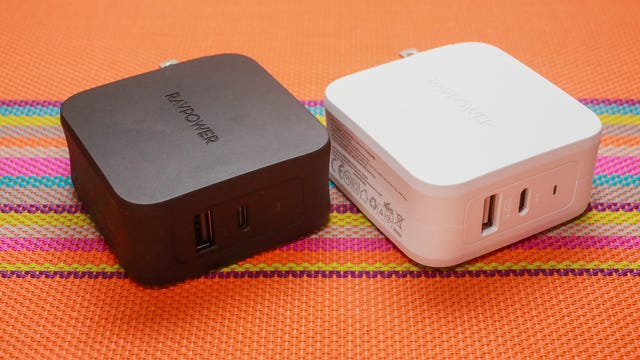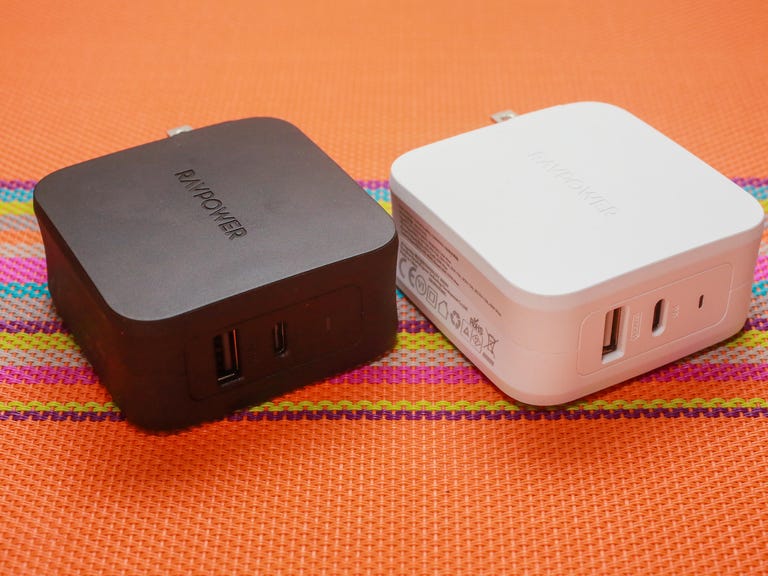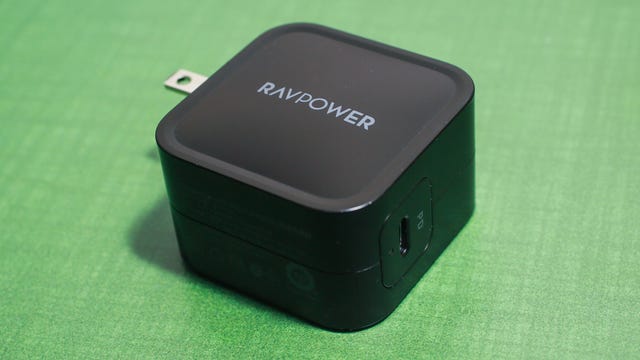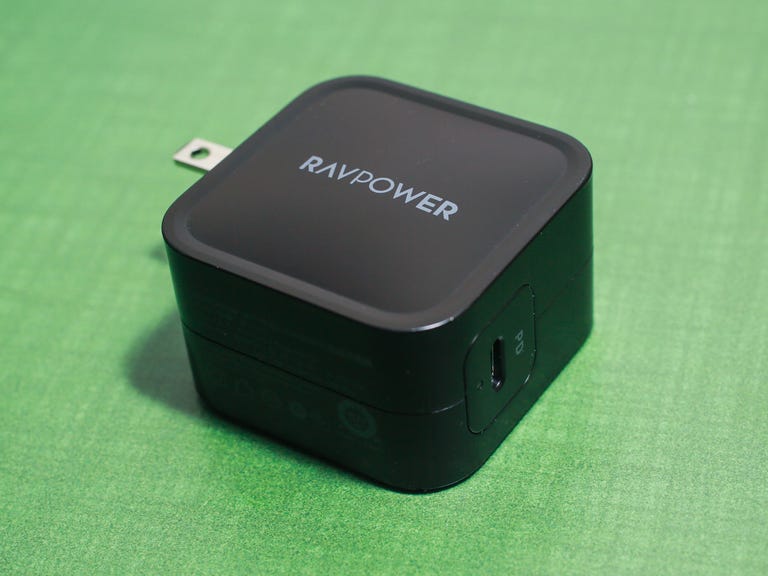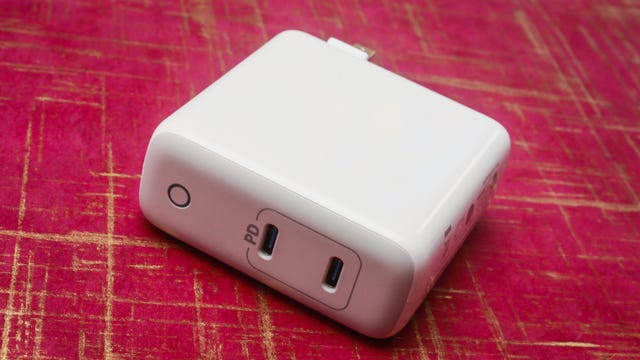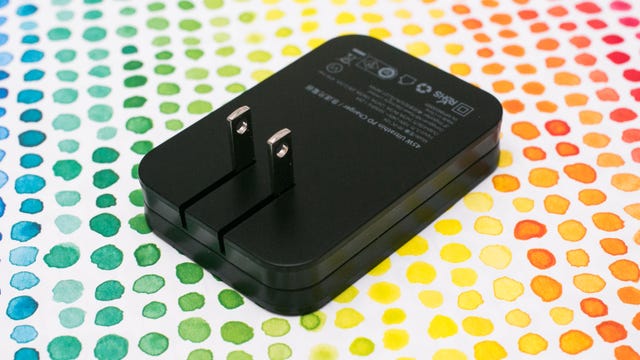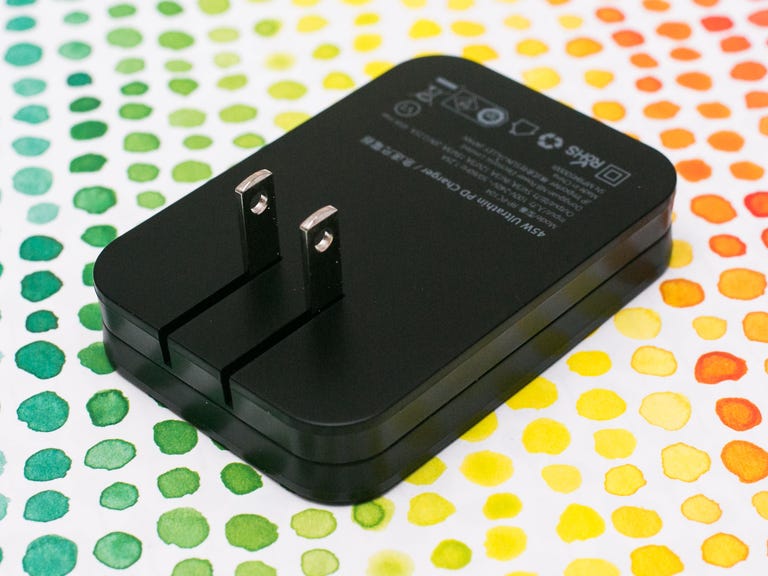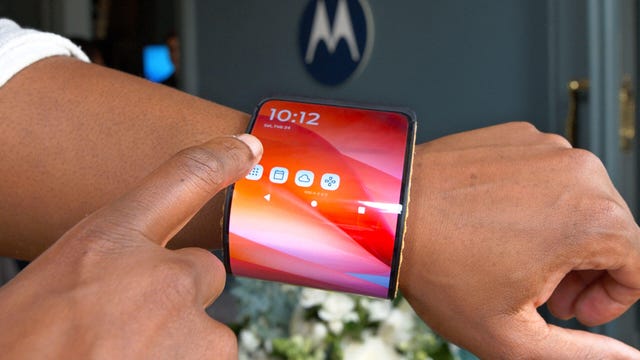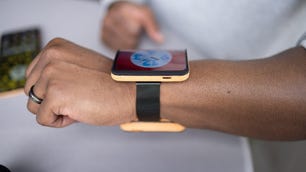 Why You Can Trust CNET
Why You Can Trust CNET
From your phone and tablet to laptop and wireless headphones, all gadgets have their own rechargeable batteries. And having a separate charger for each one can be frustrating and frankly a waste of space. Many people own far too many devices to be carrying around a separate cable and charger for each one. Thankfully, you don’t need a separate wall charger or outlet or cable for each device. That’s because the vast majority of modern devices — including newer laptops — can be charged with a one-size-fits-all USB-C charging technology: USB-C power delivery or USB-C PD.
OK, that’s a bit of an exaggeration — but not much. The fact of the matter is that if you’re packing the right kind of charging cable (or dongles), and your laptop or device was released in the past couple of years, you’ll be in very good shape. The key is getting one of the latest and greatest USB-C power delivery chargers. I spent a few weeks testing some of them and I’ve found some go-to choices for fast charging on the go.
This list goes way beyond a simple phone charger. A few commonalities to the models we focused on: Most of these use a new material called gallium nitride, or GaN, that enables high-power adapters to be made in much smaller sizes. As a result, these adapters generally deliver 60 watts of power output or better, putting them in the same ballpark as the 65-watt chargers that many laptops ship with.
Most of our top picks below include dual charging outputs instead of one, allowing for simultaneous charging of multiple devices. And they all have folding AC prongs for easy travel. We also want to note, we didn’t include car charger options here, but if you’re in the market for a USB car charger, check this one out.
If you’re looking for the best USB-C charger, read on to see which of the tried and true devices below will charge best for you.
All of the products below have been independently chosen and tested by CNET editors. We’ll update this list periodically.
Read more: Best Portable Chargers and Power Banks for iPhone
How we selected USB-C PD chargers
You’ll notice this list encompasses only two brands: Anker and RAVPower. We focused on them because of our earlier positive experience with both brands. Also, we’ve seen some of these fast charging products get enthusiastic mentions on shopping sites like The Inventory, and their Amazon user reviews are generally overwhelmingly positive, regardless of whether people are talking about android, Apple, Kindle, really any kind of device.
In our tests (see below), the Anker and RAVPower models performed very closely to one another. But the reason the final list skews almost totally to RAVPower is that the company is just killing it in the value arena. In nearly every head-to-head match-up, the RAVPower charger beats its equivalent Anker model on price. But, if you see an Anker PowerPort model on sale, it’s certainly worth scooping up.
Read more: Best Portable Chargers and Power Banks for Android Devices
We’re not saying that there aren’t other good brands out there, but now that we’ve tested the ones listed above, we can confirm that they deliver great value for the money. If and when we see viable alternatives at these price points, we’ll update this story accordingly.
How we tested USB-C PD chargers
I did my own anecdotal testing on these models by running three products down to zero battery life, charging them up and checking the battery life indicator at intervals of 30, 60 and 90 minutes. The USB devices I used were a 2019 MacBook Air, a recent HP Spectre x360 Convertible and an iPhone X.
In most cases, I ran at least two runs per charger per product and averaged them together if they came within a reasonable percentage of each other. The asterisk indicates dual-port chargers that were charging with a cable for the laptop and a cable for the iPhone simultaneously.
Charging speed, compared
| Charger | Device | 30 min. | 60 min. | 90 min. |
|---|---|---|---|---|
| RAVPower Dual-Port* | HP laptop | 46% | 64% | 81% |
| RAVPower Dual-Port* | MacBook Air | 38% | 65% | 85% |
| RAVPower Dual-Port* | iPhone X | 39% | 73% | 91% |
| RAVPower PD 3.0 | HP laptop | 50% | 71% | 94% |
| Anker Atom PD 2* | MacBook Air | 28% | 54% | 80% |
| Anker Atom PD 2* | iPhone X | 44% | 75% | 90% |
Tips for using USB-C power delivery chargers
Make sure your device is compatible. If you have a small device to plug in with a cable — smartphones (whether Apple or Android smartphones), wireless headphones, iPad, Nintendo Switch and so forth — all of these chargers will almost certainly be compatible. And most of them will charge those products at a faster speed — sometimes a far faster speed — than the default charger that came with the device. For Macs, it’s easy: If your Apple laptop has a USB-C port, it will accept power delivery chargers, while older models with MagSafe power adapters won’t. On the PC and Chromebook side, it’s trickier: Most — but not all! — new laptops with USB-C ports support power delivery charging (even if they also have a traditional proprietary charging port). Check the manufacturer’s support documentation to verify.
Get the right charging cable. The reason the RAVPower dual-port model is our top pick is that it’s truly a universal charger: It will power any standard USB or USB-C device using your old-fashioned USB-A connector or newer USB-C charging cable. But if you get one of the other models above with only a USB-C output, you’ll need to make sure you get a compatible cable, such as:
- USB-C to USB-C cable (for MacBooks, newer iPad Pros, PCs and Chromebooks and some newer accessories like speakers and headphones)
- USB-C to Micro-USB cable (for many current and older accessories, including most non-Apple wireless headphones and devices)
- USB-C to Lightning cable (for all iPhones, most iPads, AirPods and other Apple accessories)
Make sure the connections are secure. In at least one test, I came back to a laptop 30 mins later and found it didn’t charge at all. It turned out that one side of the cable was just half a millimeter too shallow in the laptop port, preventing a full connection.
Buy a USB-C compatible device. Slowly but surely, the entire electronics industry is moving over to USB-C as a common standard for data and power. While Apple’s Lightning port remains a huge exception to the rule, the affordable Lightning-to-USB-C cable has bridged the charging gap. Meanwhile, expect Micro USB to become more of an endangered species in the years ahead. When and where you can, try to opt for a USB-C device, cable and charger as you shop for things like battery packs, wireless headphones, tablets and other peripherals to plug-in. It’s a great way to future-proof your gadgets.
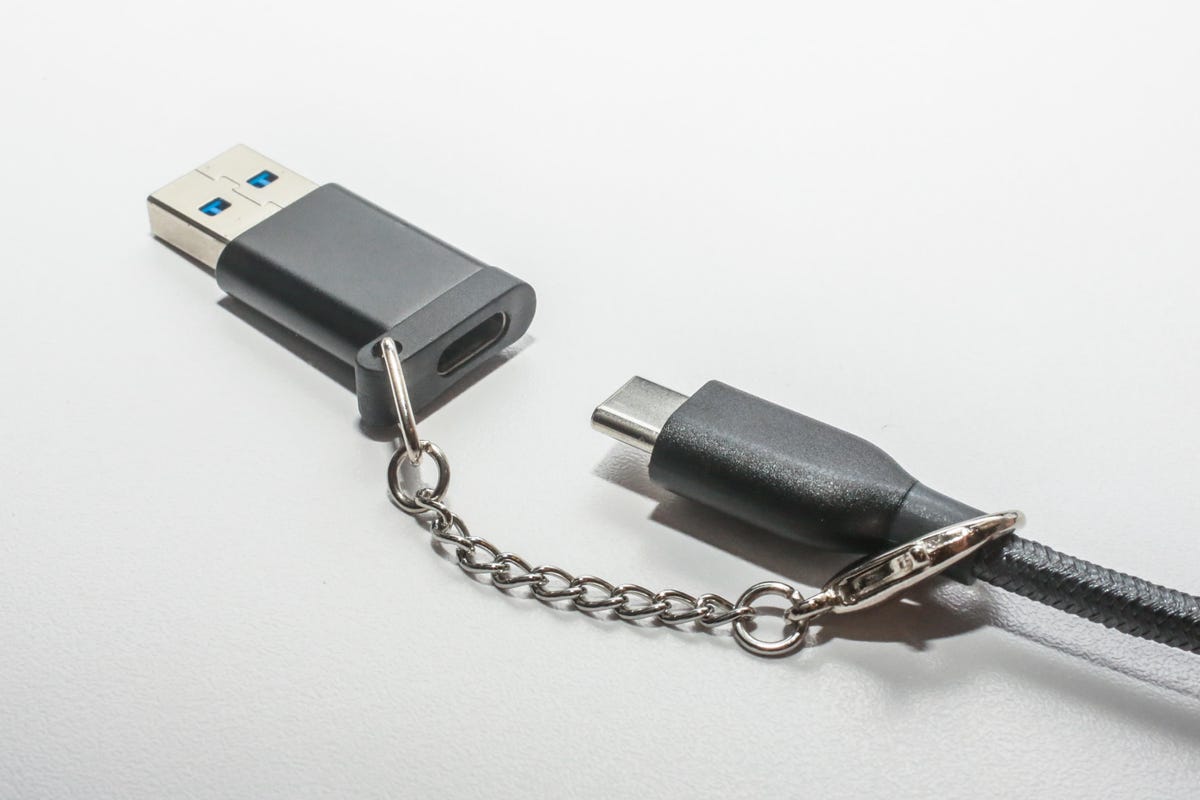
Keep a few USB-C to USB-A dongles on hand. Yes, USB-C power is pretty great — except that nearly every airline seat, coffee shop, airport lounge and hotel room now seems to be equipped with those old-fashioned USB-A charging ports. That’s why it never hurts to keep some adapters on hand for your device. The Elebase dongle shown above includes an integrated keychain that keeps it attached to the main cable. Not exactly elegant, but it gets the job done — at $9 per pair.

‘Shōgun’: Release Time, Trailer and What You Should Know About the FX Series
Inspired by James Clavell’s iconic 1975 novel, Shōgun is FX’s new limited series that explores the beauty, violence and political backstabbing of feudal Japan. Much like the book, the series takes inspiration from history and explores the unlikely relationship that grows between a British navigator and one of Japan’s five warlords as the country heads toward civil war.
Co-created by husband-and-wife duo Rachel Kondo and Justin Marks, the highly anticipated show features Hiroyuki Sanada, Cosmo Jarvis and Anna Sawai, and marks the second adaptation of Clavell’s book. In 1980, a hugely popular miniseries that starred Richard Chamberlain and Toshiro Mifune took the TV world by storm and gave NBC record-breaking ratings. It was nominated for 14 Emmys and won three for Outstanding Directing in a Limited Series, Outstanding Lead Actress and Outstanding Supporting Actor. Will FX’s Shōgun hold up by comparison?
Here is everything we know about the upcoming series, including where to stream it and the release date.
Shōgun release date and time on Hulu

The show will premiere its first two episodes on FX and Hulu on Tuesday, Feb. 27 at midnight, with each new episode airing weekly until the finale on April 23. You can also watch the premiere live on FX’s cable network at 10 p.m. ET on Feb. 27. Each episode will be roughly an hour in length. Below are the episode titles, for reference:
- Anjin
- Servants of Two Masters
- Tomorrow is Tomorrow
- The Eightfold Fence
- Broken to the Fist
- Ladies of the Willow World
- A Stick of Time
- The Abyss of Life
- Crimson Sky
- A Dream of a Dream
What is Shōgun about?

Shōgun takes place in the year 1600 after the death of the taiko, Japan’s supreme ruler, which causes a power struggle within the Council of Regents.With the arrival of British navigator John Blackthorne (Jarvis) on the shores of feudal Japan, the country’s tumultuous political landscape is disrupted as war becomes imminent.
Blackthorne is seen as a threat by everyone but Lord Yoshii Toranaga (Sanada), a samurai who’s hesitant to pursue the title of shōgun. He sees this newcomer as a potential asset, considering his knowledge of the world outside of Japan and experience with naval warfare.
An outsider in a mythical land, Blackthorne is thrown into the deep end of pre-Edo Japan’s culture and politics. It’s a lot for Blackthorne to process. Jarvis explained during the show’s presentation at the 2024 Television Critics Association winter press tour that he had some homework to do. “I learned at the same pace that Blackthorne learned things,” he explained. “I sort of tried to familiarize myself with the basic geopolitics of 1600, the Catholics and Protestants, Queen Elizabeth and stuff.”
The relationship between Blackthorne and Toranaga — which is based on the real one between warlord Tokugawa Ieyasu and British pilot William Adams — disrupts the natural order of things and sets in motion events that may eventually lead (historically speaking) to a peaceful period for Japan.
Fans will see a mostly Japanese cast in FX’s Shōgun

Jarvis is one of the only non-Asian characters seen in the FX series, a detail that completely sets it apart from the original miniseries. Joining him and Sanada in the cast are an impressive roster of Japanese talent, including Anna Sawai as Toda Mariko, Takehiro Hira as Ishido Kazunari, Toshi Toda as Sugiyami, Fumi Nikaido as Ochiba No Kata, Yasunari Takeshima as Mura, Hiro Kanagawa as Igurashi, Tadanobu Asano as Kashigi Yabu, Ako as Daiyoin, and Yuuki Kouri as Kiku, among many more.
How will this adaptation of Shōgun differ from the 1980 miniseries?

Shōgun is already drawing comparisons to Game of Thrones. With political in-fighting, gruesome battles, jaw-dropping violence and epic world-building, the two programs have a lot in common. But unlike HBO’s fantasy juggernaut, FX’s Shōgun is based on historical events. And authenticity was at the forefront of everyone’s minds during the production process.
The majority of the series is spoken in Japanese, with subtitles for viewers at home to follow along. Justin Marks explained to the Television Critics Association crowd why such a simple detail expanded the scope of the series.
“One of the things, in looking to the book, that we felt was a really under-appreciated aspect of James Clavell’s work was that actually it did an incredible job of telling a story from a variety of points of view,” Marks said, “And using now, I think, a different audience standard that we can do this show in the language of the country where it is set, that we can have this in Japanese and that we can be subtitling it, and using subtitles not as a device to hold us further apart from another culture in another language, and the people who speak it, but to bring us closer to their inner thoughts, and who they are, and what they feel, meant that we could tell a story that was a lot more layered maybe than anything that could have been done before.”
Culturally speaking, there was a proverbial elephant in the room that haunted Marks throughout the whole process of bringing the show to life. “How do we reflect this experience authentically in a way that feels like it is speaking with something new to say?” he said. “How do we get closer to not making the mistakes of the past when it comes to earlier depictions that Hollywood has done of stories set in Japan or set in other cultures?”
One of the ways Marks and Kondo bridged the gap was by bringing on as many consultants and experts as they could to put each world-building detail under the microscope. Clavell’s daughter Michaela has an executive producer credit on the series, as does Sanada — which is the first time he’s been entrusted with that type of responsibility.
“I could hire Japanese crew, specialists for the samurai drama — wig, costume, props, everything,” Sanada told the members of the TCA. “For the first time ever, I had a team to make it authentic as much as possible. I was so lucky and happy. Of course, responsibility was heavily on my shoulder. But more than that, I felt fun and happiness to create the authentic drama with a Western crew and Japanese crew together.”
Will there be more Shōgun on the way?

Much like the 1980 miniseries, FX’s Shōgun is a standalone limited series. The 10-episode story covers the entirety of Clavell’s book. There is no plan, currently, to expand the story for a second season.

MWC 2024 Tech You Can Actually Buy Right Now
MWC 2024 is finally here, which means there’s plenty of new mobile tech to get excited about. The long-celebrated mobile trade show kicked off officially today, Feb. 26, in Barcelona, Spain, and we anticipate plenty of new phone launches as well as other new concepts and technology.
The Mobile World Congress is a chance for the communications industry to launch new phones and debut innovative tech, but much of it may not hit the market for some time. We’ve gone through all the hottest devices to find which ones you can get your hands on right now and have gathered them below. All of the products here are available to preorder or purchase directly.We’ll keep updating this list to highlight new itemsas MWC 2024 continues.
Read more: Top Phones to Expect in 2024: iPhone 16, Google Pixel 9 and More
For all of our MWC 2024 coverage, from the highly anticipated Samsung Galaxy Ring to Lenovo’s transparent display laptops, be sure to check out our MWC 2024 roundup.

Netflix Added These New Titles to Its Game Library in February
In February, Netflix, a CNET Editors’ Choice Award pick, released two new titles to its growing game library. While Netflix is virtually synonymous with streaming movies and TV shows, like Black Mirror and Stranger Things, your subscription gives you access to mobile games you can play on your iOS or Android device. If you subscribe to Netflix, you can play these games and many more without ads or in-app purchases at no additional charge.
Here are the new titles Netflix added in February.
Rainbow Six: Smol
Developer: Ubisoft
This fast-paced roguelite shooter is based on the popular Tom Clancy franchise, but it has one key difference: Instead of playing as grizzled soldiers, you play as adorable character sprites. Otherwise, you have to defuse bombs, rescue hostages and take down members of a mysterious cult in order to save the world.
Pinball Masters
Developer: Zen Studios
Calling all pinball wizards! This classic arcade game lets you play on themed cabinets, which feature characters like Godzilla, King Kong and the Addams Family. You can try to beat your own score in single-player mode, or you can try to climb the online leaderboards and prove you know how to handle your flippers.
Here’s how you can access games in Netflix’s library
1. Download the Netflix app onto your iPhone, iPad or Android device.
2. Open the Netflix app and sign in to your account.
3. Scroll down your homepage until you see the Mobile Games carousel.
4. Tap into a game to learn more about it.
5. Tap Get Game to download a game you’re interested in.
An additional pop-up from either Apple’s App Store or the Google Play store will open, asking if you want to download the game. After you’ve confirmed that action, the game will start downloading on your device, like other apps.
For more gaming news, here are the latest titles on Xbox Game Pass Ultimate, Apple Arcade and Crunchyroll Game Vault. You can also check out what other movies, shows and games Netflix plans to release this year.

This 28,000 mAh Energizer Phone Just Keeps Going, and Going
In a world where smartphone batteries hardly last more than a day, Avenir Telecom conjured up a device with a 28,000 mAh battery, which the company says can last for up to a week. The catch: It’s a brick, clocking in at about three times the thickness of an iPhone 15.
Avenir unveiled the phone at Mobile World Congress in Barcelona on Monday, calling it the Energizer Hard Case P28K — it licenses the name from the battery manufacturer. The Hard Case P28K has three rear cameras (60, 20 and 2 megapixels), a 16-megapixel front camera, and can shoot 4K video. It sports an 6.78-inch, 1080p screen and an IP69 rating. It can reportedly be fast charged at up to 33 watts, and comes with a 36-watt charger.
By comparison, the Samsung Galaxy S24, whose battery life we absolutely loved, has a 4,000 mAh battery. Plenty more goes into battery life than just pure amp-hours but promising this thing could last a week is not far-fetched, based purely on the numbers.
Read more: Best Phone to Buy for 2024
The tradeoff for ridiculous battery life is a relatively more primitive mobile experience, since the Hard Case P28K doesn’t even have 5G. According to The Verge, the processor is a MediaTek MT6789, and the phone runs on Android 14. There’s 8GB of RAM and 256GB of storage. And at 27.8 millimeters (1.1 inches) thick and 570 grams, it’ll definitely weigh down your pockets (if it even fits).
The device will reportedly go on sale in October, for just under $300. Avenir told Android Authority the phone is geared toward countries without a regular power supply, and isn’t slated for a US release. The company didn’t immediately respond to a request for more information; our team on the ground in Barcelona is trying to get their hands on it right now.
There have been a host of other unique concepts and products at this year’s MWC, including phones that can wrap around your wrist, a Barbie Flip Phone and the unveiling of the OnePlus Watch 2.

Crunchyroll Game Vault: You Can Play These Retro-Style Titles Now
Crunchyroll, the anime streaming service, continues to grow its games library, called Crunchyroll Game Vault, with the addition of two retro-style titles. Subscribers to Crunchyroll’s Mega and Ultimate plans — $10 and $15, respectively — can access these titles now without ads or in-app purchases at no additional cost.
Here are the new games, and what you should know about Crunchyroll Game Vault.
Read more: The Best Anime Streaming Services of 2024
Hime’s Quest
Developer: Poppy Works
In this title, you control a character named Crunchyroll-Hime in the year 1999 as she tries to save the Anime Club’s DVD/VCR combo player — remember those? If you enjoy classic titles, like Legend of Zelda: A Link to the Past, you should give this game a try.
Thunder Ray
Developer: Purple Tree Studios
Get ready to step into the ring in this retro arcade boxing game. Throw hooks, jabs and uppercuts against a roster of eclectic opponents as you try to become the greatest fighter in the universe. It’s reminiscent of the classic game Punch-Out, except you fight against aliens and cyborgs.
What to know about Crunchyroll Game Vault
Here’s how to access games on Crunchyroll if you’re a Mega or Ultimate subscriber:
1. Open the Crunchyroll app.
2. Tap Crunchyroll Game Vault on the homepage.
3. Tap the game you want to download and you’ll be taken to the game’s page in either Apple’s App Store or the Google Play Store.
Crunchyroll launched Crunchyroll Game Vault in November as an additional perk for the service’s Mega and Ultimate subscription members. The service offered members five games at launch, like the fighting game River City Girls and puzzle game Inbento, but it plans to continue adding games.
“We will work with developers to bring more games to mobile for the first time and bring new features to existing hits,” Crunchyroll’s executive vice president of emerging business and general manager of Crunchyroll Games, Terry Li, said in an email in January.
Crunchyroll is the latest video streaming service to offer games with a subscription. Notably, Netflix began offering games to its members in 2021. However, all Netflix subscribers can access the service’s games library, while only the top two Cruchyroll subscription plans — Mega and Ultimate, but not Fan — offer access to Crunchyroll Game Vault.
For more gaming news, here are other titles Crunchyroll added to Game Vault and the latest Xbox Game Pass Ultimate and Apple Arcade titles.

Amazon Fire Tablets Drop as Low as $35 in This Limited Sale
There are a lot of great tablets out there, but Amazon makes some of the best models on the market — particularly on the cheaper end. If you want an affordable device for browsing the web, controlling your Alexa-powered smart home or keeping a kid entertained, you could do worse than Amazon’s Fire tablets for the money. And right now, you can save on several models if you shop at Woot, with prices discounted as low as $35. The sale is slated to end on March 4, though stock is likely limited, so if you find something you like, be sure to snap it up quickly.
The most budget-friendly option in the sale is the Amazon Fire 7 tablet, an inexpensive and pretty basic tablet. It’s ideal if you just need something to read on, catch up on emails with or control smart home devices via Alexa. This isn’t the latest model, but it has 16GB of storage and 1GB of RAM, and you can pick it up from Woot for just $35 instead of the usual $50. There’s also the kids version, which comes in a rugged case for added durability, and is going for a just $10 more at $45. That’s down from a retail price of $100 and the device includes a year of Amazon Kids Plus content at no extra cost.
Going up a size, you’ll find the Amazon Fire HD 8 tablet, another great affordable option, and with a slightly larger screen, it’s probably the one to aim for if you want to watch video. It has a much more substantial 64GB of storage, 12 hours of battery life and double the RAM at 2GB, giving you a smoother experience. You can pick it up for $60, and while it’s almost double the cost of the Fire 7 tablet, it has a more powerful processor and is probably the better purchase if you can swing it.
If you want something that’s a bit more high-end, then you’ll be happy with the Amazon Fire Max 11 tablet, which is going for $140 rather than the usual $230. This current-gen device has a large 11-inch screen with a 2,000×1,200 resolution, plus 4GB of RAM and the more substantial octa-core MTK8188J processor that will let you get some extra productivity work done. It also has a battery life of up to 14 hours or so, although it still only comes with 64GB of storage, so you’ll very likely want to increase that using a microSD card.
Don’t forget to pick one of these up soon before stock runs out, and if you don’t really see anything you like, check out these other tablet deals as well.

The Roku Express 4K Plus, Our Favorite 4K Streaming Device, Is Just $29 Today
When it comes to streaming devices, Roku makes some of the best on the market. Roku products earn nearly half the spots on our list of the best streaming devices for 2024 including the top spot overall, which belongs to the Roku Express 4K Plus. Right now you can pick it up for just $29 at Amazon, which is $11 off and just $5 more than the all-time lowest price we’ve seen. Though there’s no set expiration for this offer, we’d recommend getting your order in sooner rather than later if you don’t want to miss out on these savings.
We named the Roku Express 4K Plus the best media streamer of 2024 due to its affordable price tag and user-friendly interface, which makes it easy to find all your favorite shows and movies. Its unbiased platform doesn’t promote one streaming service over another. It supports 4K content with HDR for vibrant colors and sharp contrast (if your TV supports those standards), and it has Apple AirPlay built-in so you can wirelessly stream content from your iPhone, iPad or other Apple devices. It also comes with Roku’s convenient voice remote, which allows you to control your TV’s power and volume, and search for shows and movies completely hands-free.
If you’re looking for more bargains, you can check out our full roundup of smart home deals to add more convenience to your daily life. And if you’re ready to opt for a new TV instead, we have found plenty of 4K TV deals as well.

This Deal on Headway Premium Helps You Fit Learning Into Your Day for Just $50
Even when we really want to read or learn new things, it can be challenging to find time in our busy schedules. But if being short on time is what’s stopping you from investing in your personal growth and well-being, Headway can help. The app is built to expand your knowledge base by shrinking big ideas from bestselling books into short, bite-size snippets designed to help you achieve growth, productivity and happiness that you can fit into any schedule. Right now, you can get a lifetime subscription to Headway for just $50 at StackSocial. But this limited-time offer won’t last long, so we recommend signing up sooner rather than later.
Headway serves up 15-minute summaries of nonfiction books, with recommendations based on your needs and goals. It’s designed to help people with packed schedules pick up noteworthy lessons from top-selling titles. A one-year subscription to Headway will cost you $90, which means this deal saves you about 45% on the first year alone — and when you opt for a lifetime subscription to the app from StackSocial you’ll never have to worry about recurring fees.
A wide variety of the best nonfiction books have been boiled down into summaries with key insights and tips. You can dive into multiple topics, including productivity, self-growth and happiness, and you can customize the app based on your recommendations. There are also audio summaries for folks who want to learn on the go or prefer to digest information in audio form. If you want to share the app with a partner or friends, there’s a plan for two users available for $110, or you can get a family plan with four users for $150. We don’t know how long this offer will last, but it’s set to expire soon, so don’t wait too long.
If you do go for a Headway subscription, pair it with one of these headphone and earbuds deals so you can use the app even when out and about. You might even want to kick your productivity up a notch with these helpful to-do list apps, so you can get the most out of your learning and self-improvement journey as you grow.
Read more: Best Language Learning Apps for 2024

OnePlus Watch 2 Review: Big Battery Life and Big Compromises
 Why You Can Trust CNET
Why You Can Trust CNET

I wanted to love the OnePlus Watch 2. It lasts for days (yes days, plural) on a single charge. There are two customizable buttons for programming shortcuts of your choosing, similar to the Apple Watch Ultra’s Action key — which I hope Apple eventually brings to its cheaper watches. The colorful AMOLED sapphire crystal display is large enough to comfortably see full health graphs and maps of my outdoor workouts. And there are plenty of popular apps to choose from since the watch runs on Google’s Wear OS 4 platform.
What’s not to love, right? That’s what I thought.
But for all the things I like about the OnePlus Watch 2, it has many shortcomings. Among the biggest is that it comes in only one size, that happens to be way too large for my wrist. I had to move the watch higher on my wrist in order to get accurate heart rate measurements during workouts.
The OnePlus Watch 2 is missing key features that have become standard on many smartwatches, such as fall detection, ECG monitoring and period tracking. The company only guarantees software support for two years, which is shorter than the support timelines that Apple, Google and Samsung offer on their watches.

Pros
- Long battery life
- Beautiful screen
- Customizable shortcut buttons for shortcuts
- Smooth performance
Cons
- Only comes in one large size
- Only two years of software updates
- No fall detection
- Heart rate accuracy can be iffy
The OnePlus Watch 2, which launches on March 4 for $300 (roughly 240 or AU$465), feels targeted at a specific audience: Runners and sports enthusiasts who want a big screen and long battery life. That’s not a bad thing, but it means it may not be the right watch for everyone. And shoppers who do fall into that camp will likely appreciate the more holistic health readings you’d get from a Garmin watch instead.
Read more: Best Smartwatches
OnePlus Watch 2 has a premium design and useful buttons

If the OnePlus Watch 2 weren’t so large, I’d love its design. The stainless steel casing looks elegant, especially when paired with the gray band I’ve been using. And while it’s on the thicker side, it’s not the chunkiest watch I’ve worn.
But I can’t get past the size of this watch. It occupies almost the entire width of my wrist and stands out from a distance, which may be a plus if you want a watch that makes a statement. However, I prefer watches that are more subtle and understated, which the OnePlus Watch 2 definitely is not.
The OnePlus Watch 2 isn’t the only watch I find too large; Samsung’s Galaxy Watch 6 Classic is around the same size and looks just as awkward on my wrist. Thankfully Samsung at least offers the standard Galaxy Watch 6, which comes in a smaller 40-millimeter size, as an alternative.
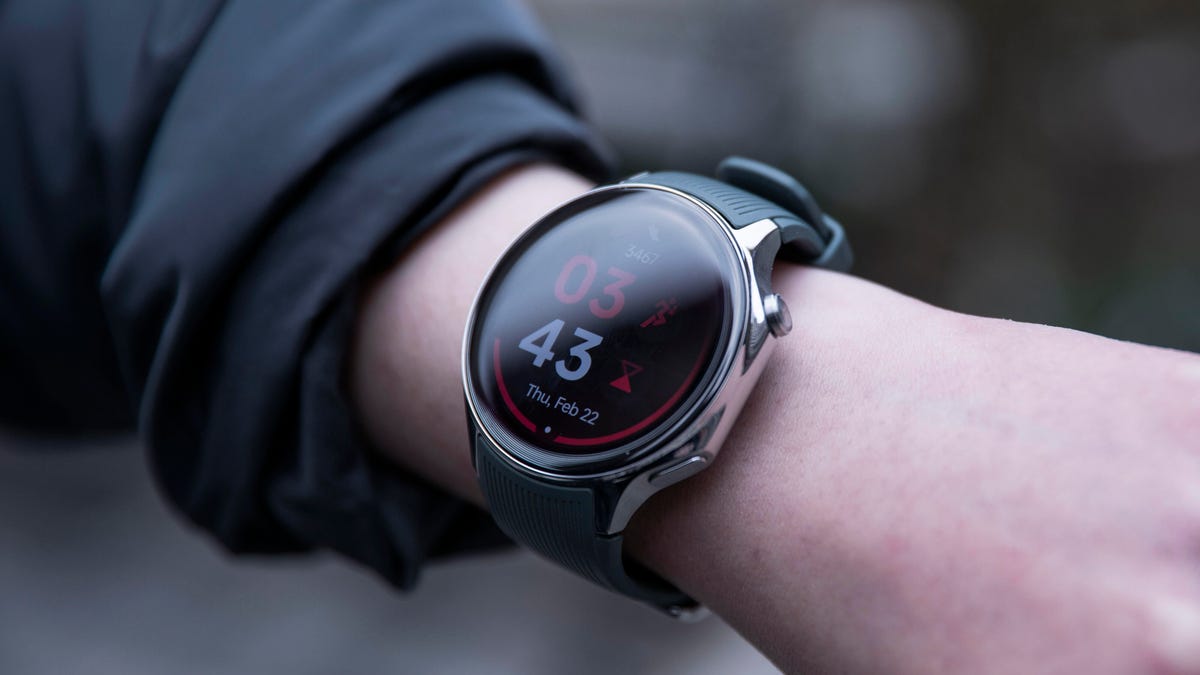
There are two buttons along the side of the watch: a top button that functions as a home key, and a bottom button primarily used as a workout shortcut. Both buttons are customizable, which provides a lot of flexibility when it comes to navigation without being too complicated to remember.
The home button will always take you back and forth between the watch face and your apps when pushing it once. But you can change what happens when you press it twice or long press it, with the default long press being set to the Google Assistant.
For the multifunction button, you can change the desired action for single and double presses. I left the single press option programmed to the workout app since I like to quickly record outdoor walks whenever I go outside. I changed the second one to the alarms app, which I found useful for setting my morning alarm before bed.
My only complaint is that I initially kept mistaking the home button for a digital crown like the one on the Apple Watch and Pixel Watch because it has the same shape. I instinctively wanted to twist it to scroll through my lists of apps and notifications, although nothing happened when I did.
The OnePlus Watch 2 has a sapphire crystal display and is rated for IP68 water-resistance, which means it should be protected when submerged in water. The AMOLED screen looks colorful and sharp and provides plenty of space for reading text messages, viewing my previous night’s sleep graph and reviewing the route I took during a walk. Like the Pixel Watch 2, the black bezels framing the screen are somewhat noticeable. But since the OnePlus Watch 2 has such a large display, I didn’t mind this as much as I did when using Google’s watch.
OnePlus Watch 2 battery can last for days
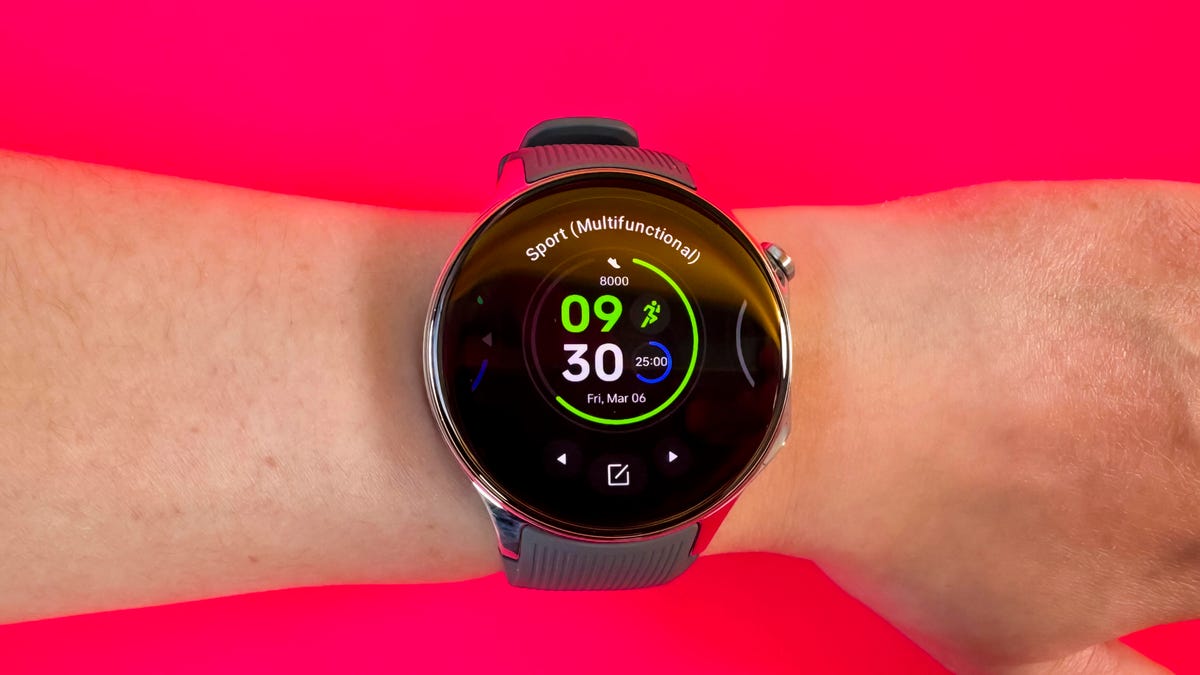
The highlight of the OnePlus Watch 2 is its long battery life. OnePlus says it can last for 100 hours when used in “smart mode,” 48 hours with heavy usage and up to 12 days in power saver mode. I haven’t had time to put those claims to the test yet since I had to charge the watch to install a software update.
Still, I’m impressed by what I’ve experienced so far. I’ve been able to get about three days of battery life out of the watch, which would be long enough to take it with me for a long weekend without bringing my charger. That’s far longer than I usually get while wearing the Apple Watch Series 9 or Google Pixel Watch 2, both of which last for about a day and a half between charges.
OnePlus attributes that battery life to the fact that the watch uses two different chips, each of which handles different tasks. There’s a Qualcomm Snapdragon W5 chip for running Google’s Wear OS software, and a BES 2700 chip for background activity.
But OnePlus isn’t the only one beating Apple and Google in battery life. The Garmin Venu 3 lasted for almost a week in my testing, and the Mobvoi TicWatch Pro 5 could last for two days before needing a charge, according to my colleague Mike Sorrentino.
Note that battery life will always vary, depending on how you use the device. Certain features, like the always-on display and GPS tracking, will drain the battery faster.
During my time with the watch, I mostly left the always-on display turned off except for during workouts, which usually last for about 30 to 45 minutes. I also used GPS to track outdoor walks that usually last for around 10 minutes during my commute to work. Otherwise, I’ve been using the OnePlus Watch 2 to check notifications, browse my health data and track sleep overnight.
The watch also charges quickly, going from 29% to 85% in just 20 minutes even when I only had a tiny 5-watt power adapter handy.
Sleep and activity tracking with the OnePlus Watch 2
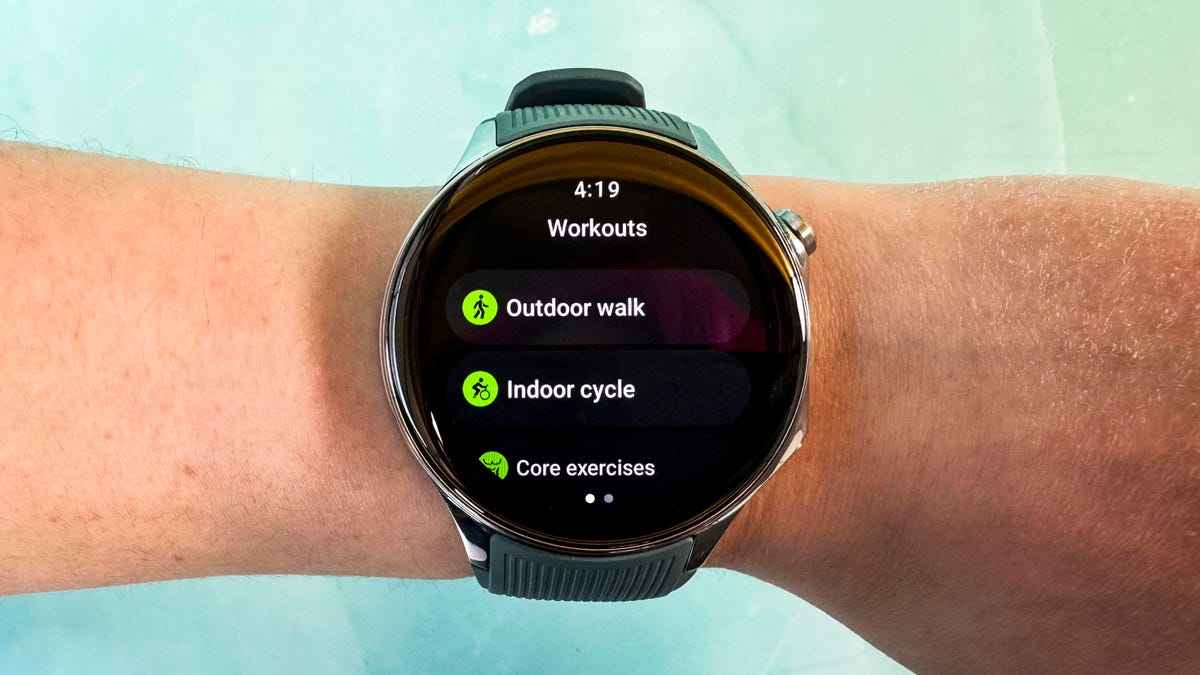
When it comes to sleep, activity and health tracking, the OnePlus Watch 2 falls in an interesting place. It has more to offer than a budget smartwatch but not everything you’d get in a premium watch.
Case in point: It can measure metrics like potential breathing disturbances during sleep, includes sensors for measuring blood oxygen and has dual-frequency GPS for more precise location tracking — a feature that’s exclusive to the Ultra model in Apple’s lineup.
I tested the dual-frequency GPS by tracking a short walk through an underground subway station, where it’s typically more difficult to get a signal. The OnePlus Watch 2 successfully logged my brief stroll and displayed the results on a map, but so did the Pixel Watch 2. I’ll have to test the OnePlus Watch 2’s GPS in different environments to see if that dual-frequency GPS brings meaningful improvements over other watches.
But the OnePlus Watch 2 is missing some basics I’d expect from a watch at this price, like fall detection and period tracking. It also lacks temperature sensing, which has become more common in wearables in recent years. There’s also no option to take an ECG, so it may be a non-starter for those who are primarily interested in a smartwatch for keeping a closer eye on their cardiac health.
While a $300 watch may not have all of those features, it’s reasonable to expect at least some of them — particularly fall detection and period tracking — at that price.
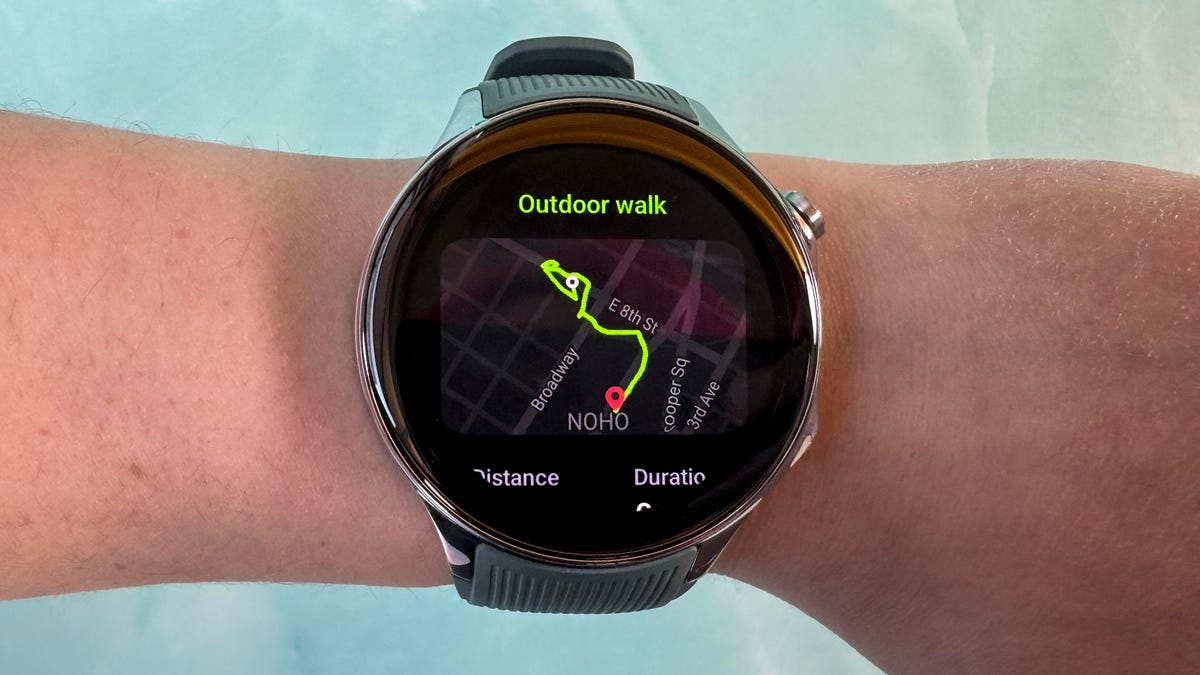
Those who are most interested in logging workouts with their watch might not mind these omissions, especially since the OnePlus Watch 2 has plenty of exercise options. It also has dedicated modes for sports like badminton, running and tennis.
My first few times exercising with the OnePlus Watch 2 were frustrating. I felt like I was pushing myself hard, but my heart rate was only in the 130s whenever I looked down at my wrist. I compared it with a Polar chest strap heart rate monitor to see if it was my imagination, and sure enough there was a huge gap between the two.
Installing a software update and moving the watch a little further up on my wrist so that it fit more snugly seemed to fix the problem. After making those changes, the OnePlus Watch 2 was only about five to seven beats off from the chest strap, which is more typical of a smartwatch.
Read more: The Biggest Questions to Ask Before Buying a Smartwatch
Even when performance improved, however, the OnePlus Watch 2 was slow to catch up to my chest strap in short intense intervals during a workout. That may be an issue for those who prefer interval or HIIT training. Other watches I’ve tested were more accurate out of the gate without much fuss, and they were capable of catching up with the chest strap more quickly. But during rest intervals, the OnePlus Watch 2’s readings fell within 2 to 3 beats of my chest strap.
I had a similar initial experience with sleep tracking, although my results were much more consistent after adjusting the watch’s fit and installing a software update. Once those changes were made, sleep duration and sleep score results from the OnePlus Watch 2 nearly matched those from my Oura ring.
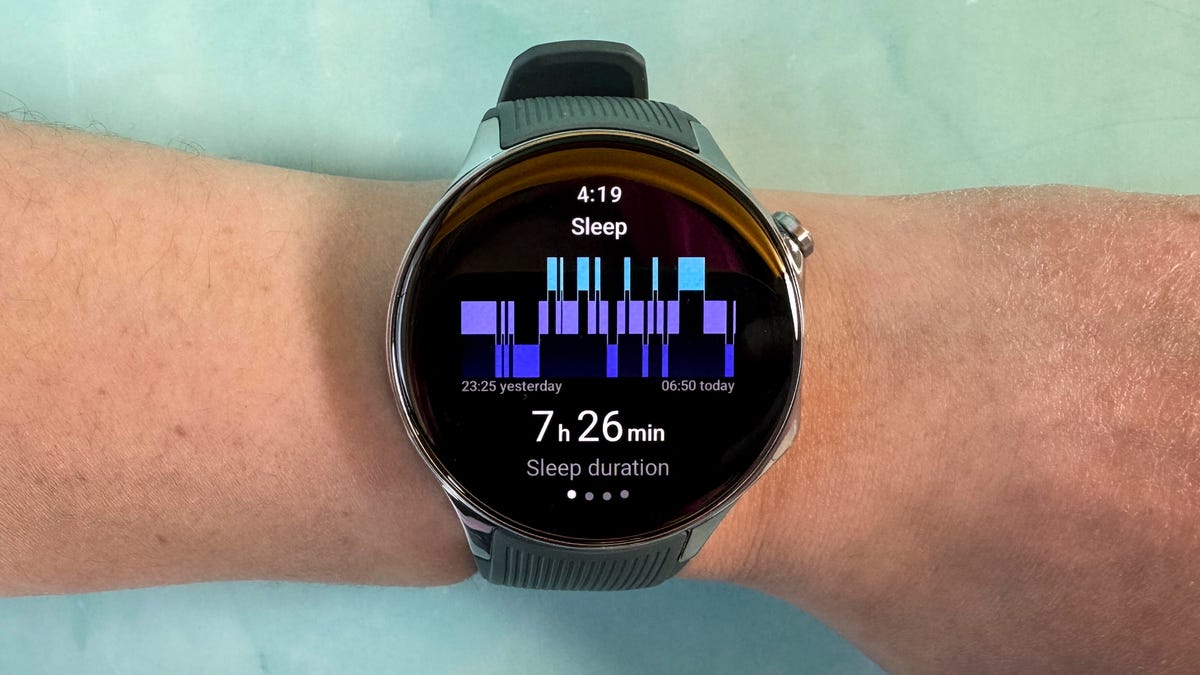
The OnePlus Watch 2’s long battery life gives it a big advantage over the Apple Watch, Pixel Watch and Samsung Galaxy Watch as a sleep tracker. Since I didn’t have to charge the watch nightly, I was able to track a couple of nights’ worth of slumber to make sure I was staying on track and getting to bed on time. But again, since the OnePlus Watch 2 is noticeably large, it’s not the most comfortable smartwatch to wear overnight.
I appreciate that OnePlus provides a sleep score to assess the quality of your sleep, unlike the Apple Watch, in addition to offering other less common features, like snoring monitoring.
What’s really missing from the OnePlus Watch 2 is big-picture analysis that ties metrics together to provide more context about your wellness. Garmin, Oura and Google’s Fitbit each have their own version of this, and it’s a great way to see how your sleep and activity affect one another at a glance. Samsung is also working on a similar feature called My Vitality Score, which will eventually roll out to the Samsung Health app.
The OnePlus Watch 2’s smooth interface and performance
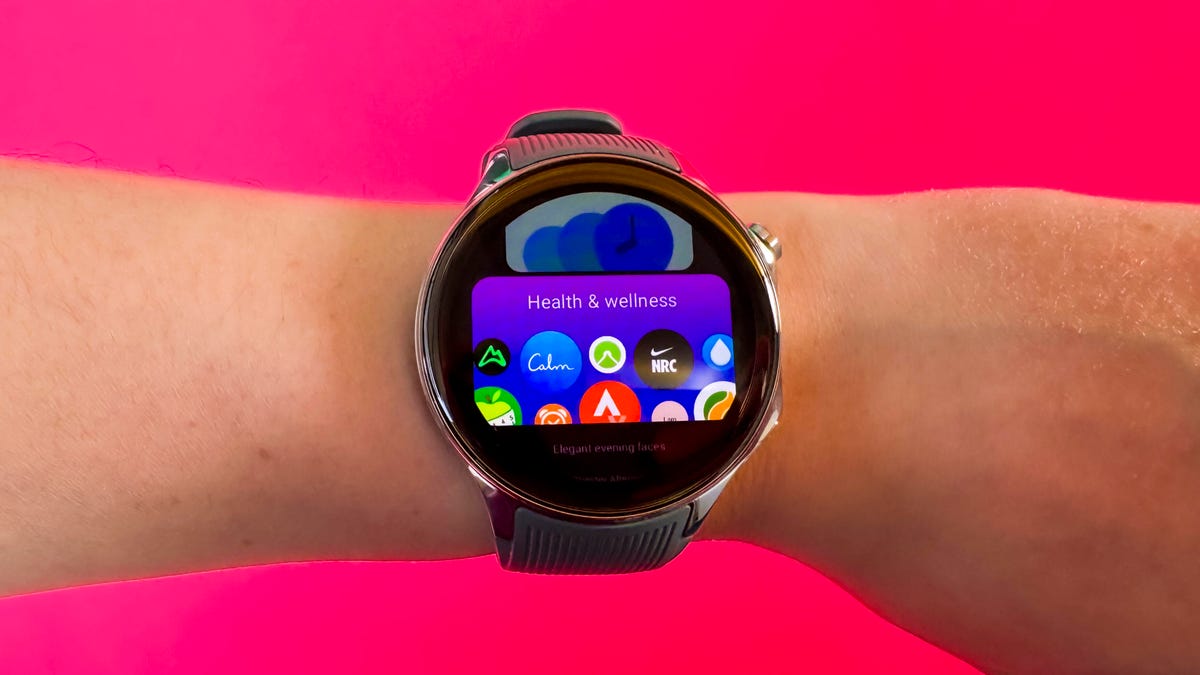
The OnePlus Watch 2’s dual-processor setup makes for fast and smooth performance. Everything from launching apps to swiping through tiles and scrolling through notifications felt light and quick.
Since the OnePlus Watch 2 runs on Google’s Wear OS 4 software, apps like Google Wallet, Google Maps, YouTube Music and the Google Assistant are available on the watch by default. You also have access to the Google Play Store, meaning you’ll have a wide selection of third-party apps to choose from.
That gives the OnePlus Watch 2 an advantage over other watches that run on their own operating systems (like Garmin’s) when it comes to the “smart” side of smartwatches. Setup is also a breeze since it supports Google’s Fast Pair system. The Pixel 8 Pro I’ve been using to test the OnePlus Watch 2 recognized the watch almost instantly when turning it on.
The downside, however, is that OnePlus only commits to two years of full software support, which is less than some of its competitors. Samsung provides five years of software updates for its Galaxy Watches, while Google offers updates for at least three years from the Pixel Watch’s release.
Navigation is simple and will feel familiar if you’ve used another Wear OS smartwatch. You can cycle through tiles that show bits of data like the weather, your activity and your stress level by swiping left or right from the watch face. Pulling down from the watch face lets you access quick settings, while swiping up from the bottom of the watch face shows your notifications.
Unlike other smartwatches such as the Pixel Watch and Apple Watch, OnePlus doesn’t require two separate apps to manage the watch and view health data. It all lives in the OHealth app, which is divided into three tabs: Health, Fitness and Devices.
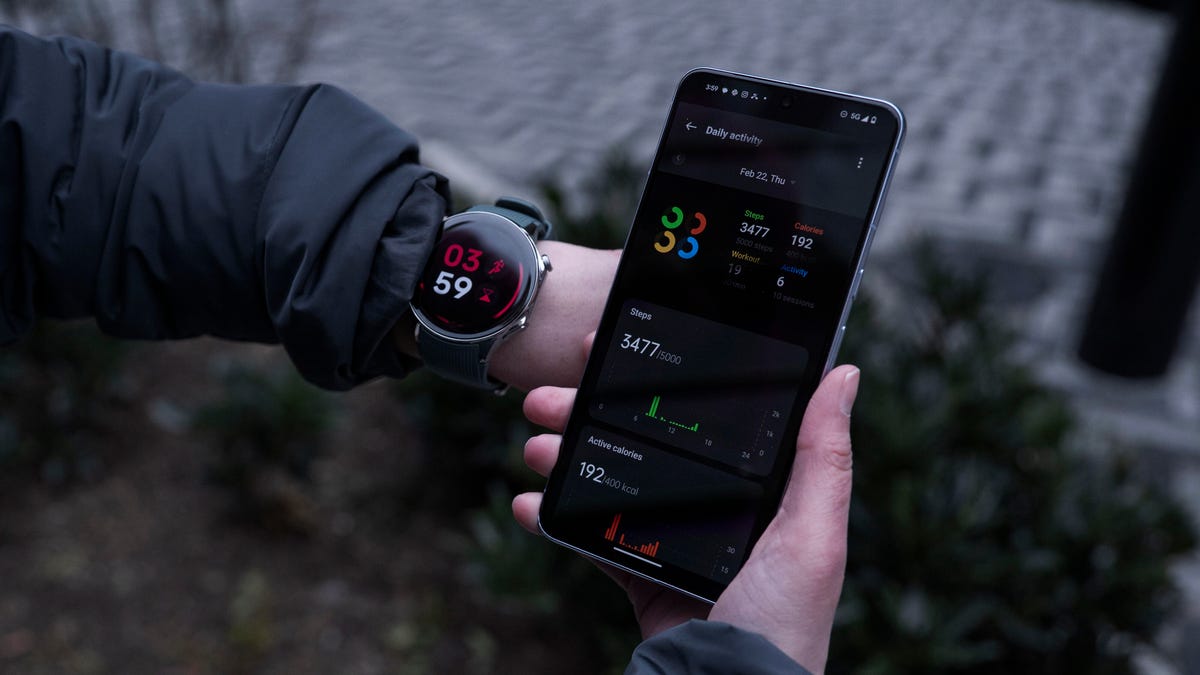
The Health tab serves as your main dashboard wellness data, like trends related to heart rate, sleep stress and blood oxygen. You can also find your workout history and daily activity progress in this tab.
The Fitness tab lets you log runs and walks on your phone, which seems redundant since most people will likely be recording their runs and walks on the watch. And then the Devices section lets you manage your watch faces, tiles notifications and other settings.
It’s convenient to have everything all in one place. But as I mentioned earlier, I wish the OHealth app had more trends and insights that tie together your workouts, activity, sleep and wellness readings rather than just serving as a hub for all that data.
OnePlus Watch 2 overall thoughts
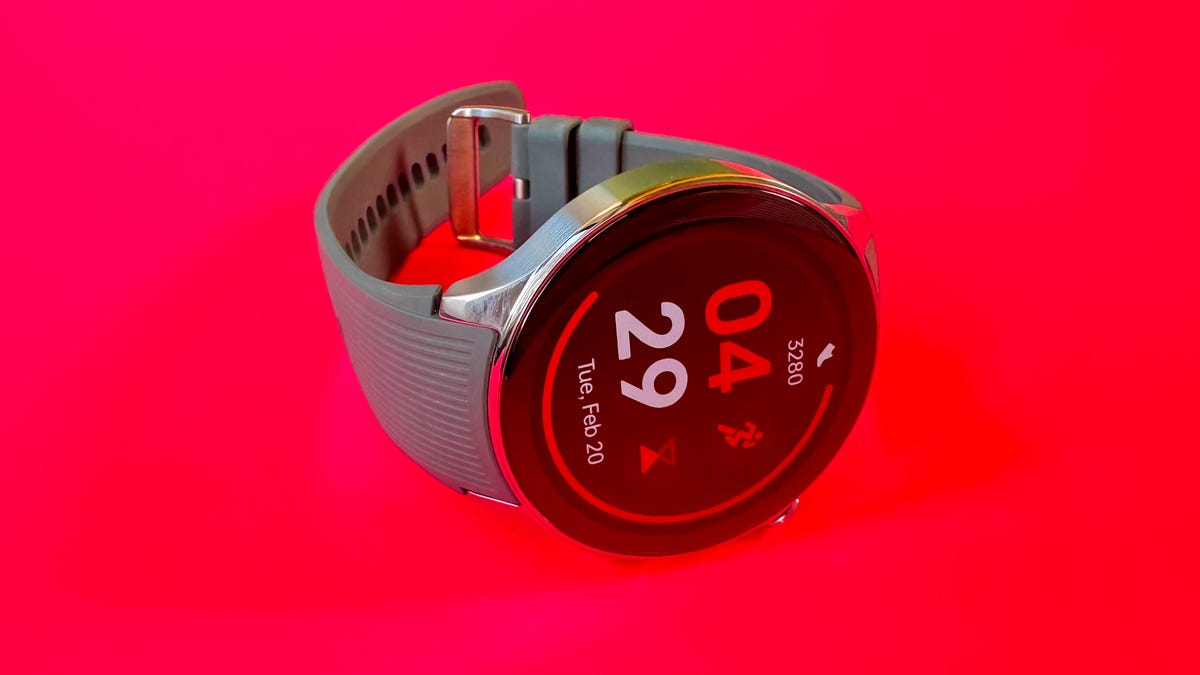
The OnePlus Watch 2 has a lot going for it, but also comes with some compromises that are hard to overlook. While I love the watch’s long battery life, vibrant screen and handy shortcut buttons, it’s simply too large for my wrist, and I imagine I’m not alone in feeling that way. I also had to fiddle with the way the watch fit more than I would have liked to get a reliable heart rate reading during workouts, and the watch is missing some health and safety features that now feel standard in 2024.
If you want a big screen, long battery life and plenty of workout options, the OnePlus Watch 2 might be for you. But if you’re OK with giving up access to the Google Play Store and can stretch your budget, you’ll probably be happier with a Garmin smartwatch. The Galaxy Watch 6 and 6 Classic are also compelling alternatives for those who want a similar experience with more health tracking features, but at the expense of battery life.



